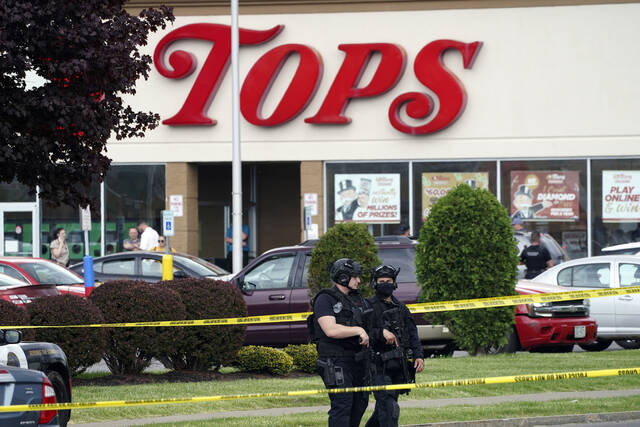Editorial: Federal death penalty and the journey toward justice
The journey toward justice for the victims of the Pittsburgh synagogue shooting was a slow crawl. It took five long years to journey from a house of worship in Squirrel Hill to the federal courthouse on Grant Street.
In June 2023, Robert Bowers was found guilty on all 63 counts in connection with his antisemitic attack on the Tree of Life, Dor Hadash and New Light congregations that claimed the lives of 11 Jewish worshippers in October 2018.
The three-step process kept the jury busy all summer. In July, they decided Bowers qualified for the death penalty. The final step came in August when they agreed on a sentence of death over life in prison.
Buffalo, N.Y., is facing the same journey.
In 2022, 10 Black people at the Tops Friendly Market were killed. Prosecutors say Payton Gendron, 20, didn’t just fire at them in a similarly horrific storm of bullets and blood. He livestreamed the event from a camera in his helmet like it was a first-person video game.
On Friday, U.S. Attorney Trini Ross filed documents with the court stating her intention to seek the death penalty.
Like with the synagogue shooting, the grocery store was picked specifically for the people Gendron would find. Ross said the location 200 miles from his rural New York home was selected to “maximize the number of Black victims.”
It is just the latest instance of prosecutors pursuing such a penalty for such an egregious and hate-motivated crime.
In July, Patrick Crusius took a plea for his 2019 attack on Hispanics at an El Paso Walmart to avoid the death penalty. Dylan Roof, like Bowers, is awaiting death at USP Terre Haute for his 2015 attack on Mother Emanuel African Methodist Episcopal Church in Charleston, S.C.
The number of cases where the death penalty is being or has been sought can turn out to be a life sentence in reality. From 2003 to 2020, no federal prisoners were executed despite those being sentenced. A similar hiatus occurred between 1963 and 2001 becasue of a Supreme Court decision pushing pause and Congressional action putting it back on the table.
The first execution to take place after that was for mass murder: Timothy McVeigh killed 168 people with the bombing of the Alfred P. Murrah Federal Building in Oklahoma City.
There is no telling now how Gendron’s case will turn out. The death penalty can make the process grind even slower, like the Bowers case, or prompt a plea like Crusius’ case.
But with more mass shootings ripping up safe spaces like grocery stores, churches and synagogues, it seems unlikely Ross will be the last U.S. attorney pursuing a capital case.
Remove the ads from your TribLIVE reading experience but still support the journalists who create the content with TribLIVE Ad-Free.

